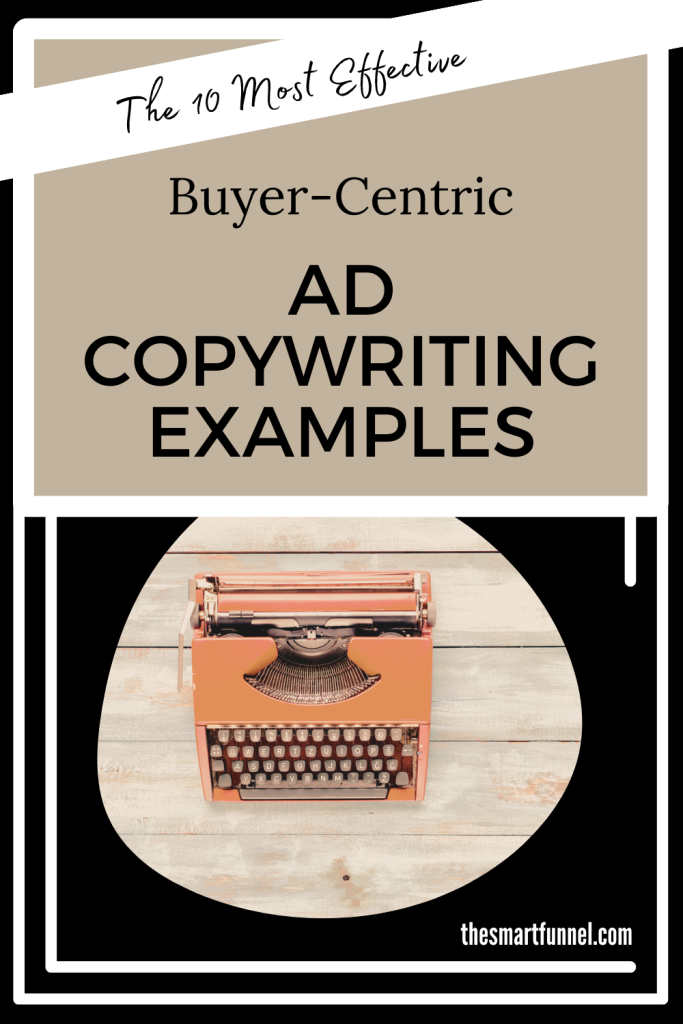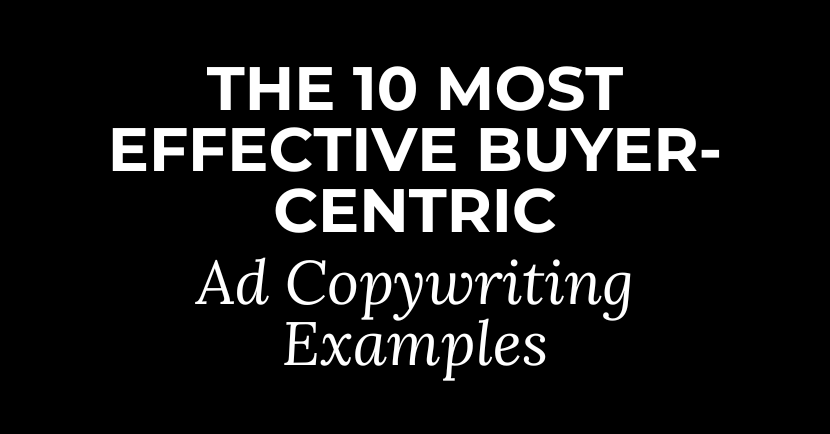In the world of marketing, ad copywriting examples serve as invaluable blueprints. They are a way of lighting up that path to persuasive communication. The most iconic brands and ad agencies master this artful blend of words. They can shape narratives that not only capture attention but also compel the customer to take action. From David Ogilvy’s timeless print classics to the contemporary brilliance of digital campaigns, the essence remains the same: to craft messages that resonate deeply.
In this blog post, we delve into ten exemplary instances where brands have showcased ad copywriting at its finest, leaving an indelible mark on the advertising landscape. Read on to learn about some of the finest copywriting in marketing and the key takeaways you need for your business.
1. Apple: A Simplistic Approach to a Landing Page
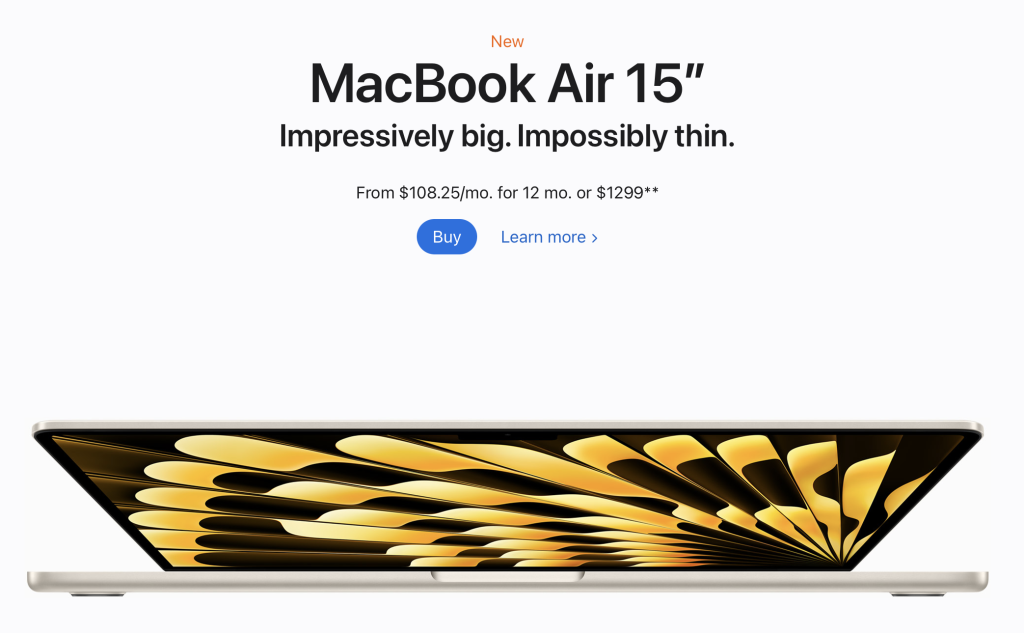
Apple stands as a symbol of design excellence and user-centric innovation. It does that through its product lineup and also in its approach to digital marketing. This philosophy extends distinctly to their landing pages. These pages serve as a masterclass in the power of minimalism to sell.
Their landing pages, often spotlighting a single product or feature, manage to convey an entire narrative in a surprisingly limited space. At first glance, these pages present visitors with everything they need to know. This is a perfect example of how to craft a landing page that resonates, guiding potential customers through the journey with concise messaging and a transparent call-to-action.
Apple’s digital presence, especially its landing pages, exemplifies the company’s belief in prioritizing quality over quantity. Every word, image, and design element is meticulously curated to achieve maximum impact. They’ve mastered the art of eliminating any superfluous distractions. That ensures the target market remains fixated on the core value proposition of the showcased product or feature.
Another key strategy evident in Apple’s landing pages is their expert use of social proof. Through carefully selected customer reviews and testimonials, Apple builds trust and fosters an emotional connection with potential buyers, nudging them further down the conversion funnel.
This great example of a landing page stands as a testament to the fact that sometimes, less can indeed be more. By centering their approach on quality ad copy, clear product descriptions, and strategic use of social proof, Apple doesn’t just inform but inspires, creating a palpable sense of urgency among potential buyers.
2. Rolls-Royce: David Ogilvy’s Classic Print
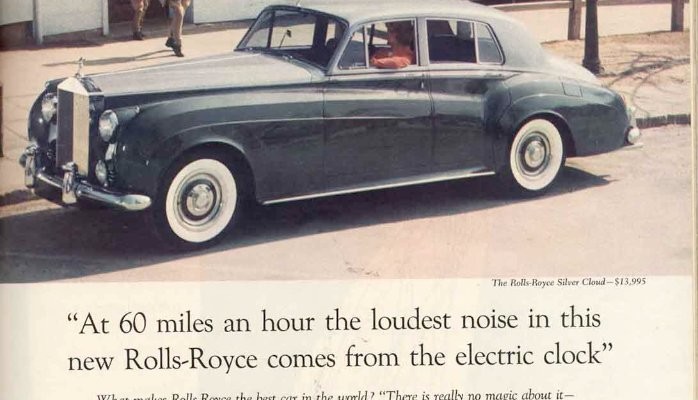
Rolls-Royce, a symbol of luxury and craftsmanship, found its advertising match in David Ogilvy, a titan of the advertising world. When Ogilvy crafted the iconic print ad for Rolls-Royce in the 1950s, he wasn’t just selling a car; he was selling a dream, an experience, and a status symbol.
The ad’s headline read, “At 60 miles an hour, the loudest noise in this new Rolls-Royce comes from the electric clock.” With this line, Ogilvy encapsulated not just the car’s superior engineering but also its unparalleled luxury. Within seconds, the reader is hooked. They are curious and want to learn more about the experience of owning and driving such a masterpiece.
Ogilvy’s approach was rooted in deep research. He spent hours at the company’s factory, speaking to engineers and understanding the car’s nuances. This dedication to understanding the product descriptions and specifications resulted in the ad copy that spoke to the car’s unique features and its distinction in the automotive market.
But what truly set this print ad apart was its focus on the potential buyer’s pain points. He addressed them with impeccable precision. By emphasizing the car’s quietness, Ogilvy tapped into the desires of his target market, those who valued sophistication, tranquility, and luxury.
Digital marketing today owes much to the lessons from such great ad copy examples. The Rolls-Royce ad was a masterclass in understanding your audience, using effective advertising copy to evoke an emotional response, and creating a sense of urgency to own a piece of luxury.
In an age where advertising was becoming a dominant force, this Rolls-Royce campaign set the gold standard. It reminds business owners and advertisers of the power of good copywriting and the essence of truly understanding their product and audience.
3. Coca-Cola: Facebook Ad Finesse
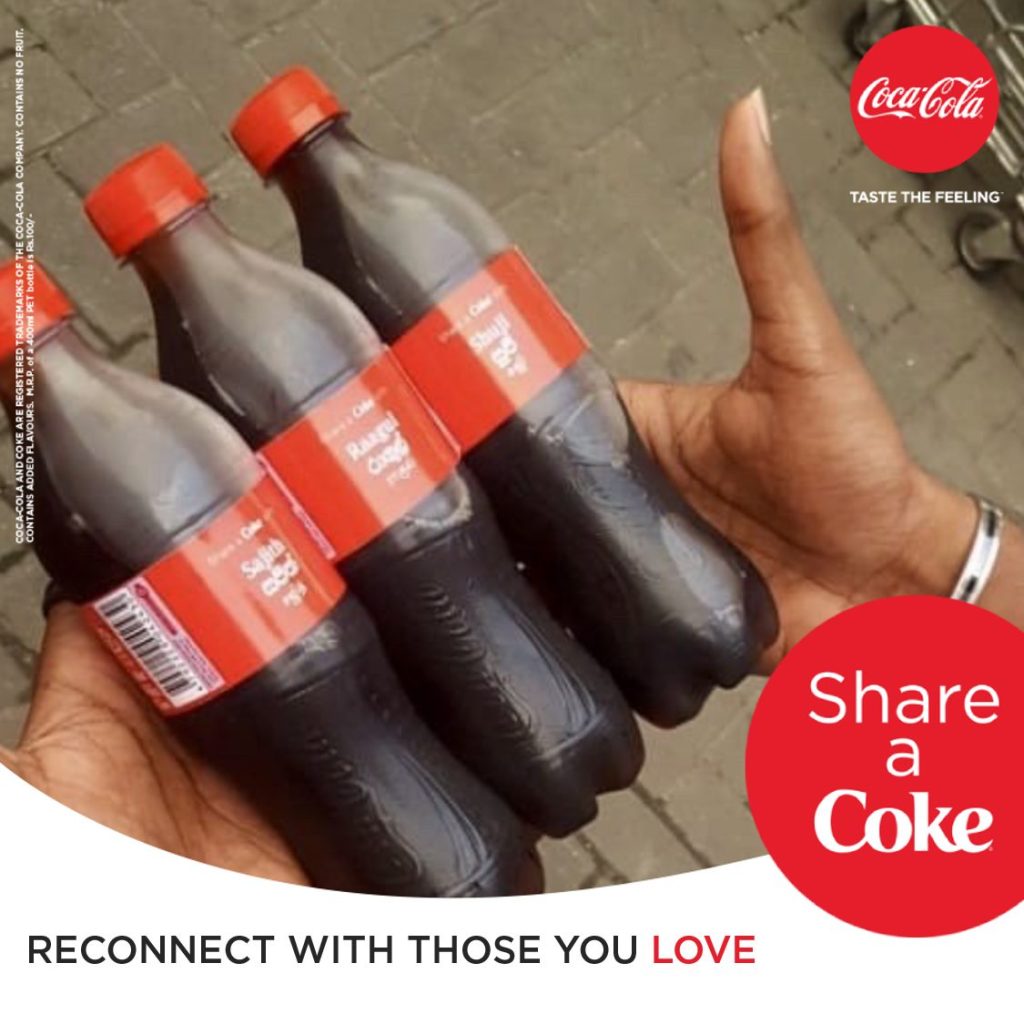
In terms of ad copywriting examples, few brands have harnessed the potential of social media advertising as effectively as Coca-Cola. With a product that’s globally recognized and universally loved, their approach to Facebook advertising has always been about more than just selling a beverage; it’s been about sharing moments of happiness, connection, and celebration.
Every ad from Coca-Cola on Facebook feels like a microcosm of joy. At first glance, their visuals—often vibrant, always emotive—capture the essence of the brand’s promise: shared moments and simple pleasures. But it’s their ad copywriting that truly stands out. Each post, whether promoting a new product launch or tapping into seasonal celebrations, speaks directly to the emotions of their audience. They evoke feelings of nostalgia, joy, or even anticipation.
One of the brand’s distinct strengths lies in its consistent use of social proof. User-generated content, testimonials, and shared stories from happy customers around the world are regular features in their ad campaigns. By showcasing real experiences and genuine love for their products, Coca-Cola effectively bridges the gap between a global brand and individual consumers, fostering a sense of personal connection.
Another commendable aspect of Coca-Cola’s Facebook ad strategy is its adaptation to changing digital marketing trends. They’ve managed to incorporate current events, trending topics, and popular culture into their campaigns. Despite being an old brand, they do a great job of remaining relevant to their potential customers.
All these elements converge to create a powerful emotional response in the viewer. Coca-Cola’s ads don’t just encourage you to buy a drink; they invite you into a world of shared experiences and memories.
In the rapidly changing world of Facebook advertising, Coca-Cola’s strategy serves as a perfect example of how to blend product promotion with genuine human connection. It’s a lesson for every business owner and digital marketer.
4. Dropbox: The Power of the Free Trial
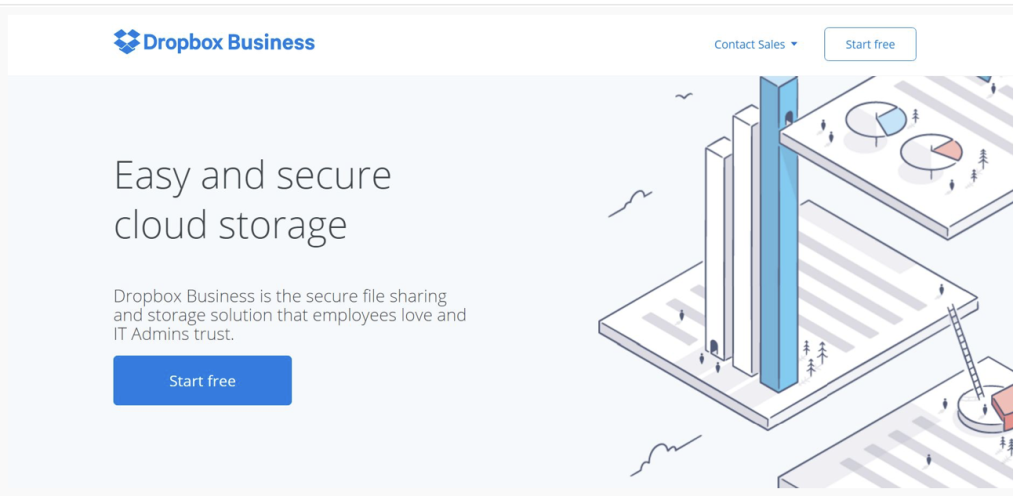
Digital storage and file sharing seemed like a boring, techie affair until Dropbox came along to shake up the industry. Dropbox emerged not only as a technological pioneer but also as a marketing genius. Their growth is as much a story of clever, customer-centric advertising strategies (notably their use of the free trial) as it is of product design innovation.
Upon first glance at Dropbox’s promotions, it’s evident that they understand the psyche of their target market: individuals and businesses wary of committing to a new digital product without experiencing its potential firsthand. By offering a hassle-free and robust free trial, Dropbox reduces the barriers to entry, allowing potential customers to test the platform’s utility without any financial strings attached.
But it’s not just the offer of a free trial that distinguishes Dropbox; it’s the accompanying ad copy that communicates its value. Emphasizing features such as seamless collaboration, ease of access from any device, and robust security, their advertisements address the primary pain points of their potential users, making the proposition even more enticing.
Social proof also plays a significant role in Dropbox’s strategy. Throughout their campaigns, they’ve showcased testimonials from satisfied users, ranging from freelancers to established businesses, underlining the platform’s versatility and reliability. These genuine reviews act as trust signals, assuring newcomers of the platform’s quality and efficacy.
Dropbox’s free trial strategy has been so successful that it’s become a go-to case study in digital marketing circles. Their approach demonstrates the effectiveness of aligning an offer, in this case, a free trial, with compelling ad copy that speaks directly to the needs and desires of potential buyers.
In the world of SaaS (Software as a Service) promotions, Dropbox’s ad copywriting examples stand as a testament to the power of understanding your audience, delivering clear value, and using strategic copy to guide them toward conversion.
5. Airbnb: Google Ads Mastery

Airbnb, a revolutionary player in the hospitality industry, has transformed how we travel and how we engage with online advertisements. A significant facet of their success can be attributed to their adept utilization of Google Ads, which has allowed them to connect with potential customers at critical decision-making moments.
It’s easy to notice within seconds that an Airbnb Google ad is more than just a typical listing. They use their unique rentals as an invitation into a unique travel experience. Their ad copies are meticulously crafted, showcasing the promise of more than just a place to stay. They sell a memorable experience and an adventure waiting to unfold. By aligning their Google Ads with searchers’ intent, Airbnb ensures that they are always presenting the most relevant offerings to potential guests.
Each ad highlights specific elements that make Airbnb unique. From showcasing homes that offer a perfect example of local architecture to those that boast exceptional guest reviews, the focus is always on presenting an experience that is authentic and memorable. This emphasis on quality and authenticity instills trust and generates an emotional response from potential travelers, urging them to click through and explore more.
Social proof, a cornerstone of Airbnb’s marketing strategy, also finds its way into the brand’s Google Ads. Highlighting properties with top reviews or those that have been frequently booked gives searchers added confidence in their potential choice, further enhancing the ad’s effectiveness.
Airbnb’s strategic approach extends beyond the ad copy. Their landing pages, often a continuation of the ad’s narrative, are optimized for conversions. High-quality photos, clear descriptions, and easy navigational elements ensure that the potential buyer’s journey, from the ad click to booking, is seamless and engaging.
In digital marketing, Airbnb’s Google Ads strategy stands as a beacon for any ambitious business. They demonstrate the importance of marrying data-driven insights with emotive storytelling to capture and convert potential customers.
6. Amazon: Wonderous Product Descriptions
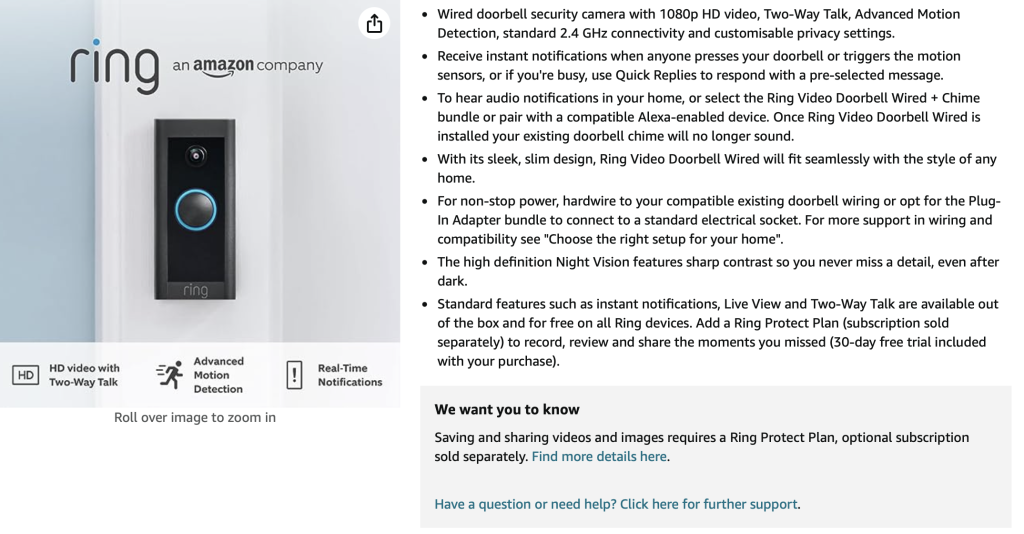
Amazon stands as a colossus of the eCommerce world. Its vast digital marketplace is a testament to its prowess. This brand has an unparalleled understanding of the online shopping experience. Central to this customer-centric approach is Amazon’s mastery in crafting product descriptions that inform, engage, and persuade.
A typical product description on Amazon goes far beyond mere specifications. At first glance, it’s a narrative detailing what the product is, why it’s valuable, and how it can enhance the buyer’s life. Amazon understands that for potential buyers, especially in a digital space where tactile interaction is absent, the written word becomes a powerful tool to bridge the gap between curiosity and purchase.
Each product description is meticulously crafted. From highlighting the unique selling points of an item to addressing potential pain points that a customer might have, Amazon’s descriptions are both comprehensive and compelling. The inclusion of high-quality images, customer reviews, and often videos adds further depth, offering the shopper a holistic understanding of the product.
Social proof is another key component. By showcasing user reviews, ratings, and testimonials, Amazon builds trust. These elements serve as endorsements, assuring potential customers of their purchasing decisions. This approach not only amplifies the efficacy of the product description but also instills confidence in the buyer.
Moreover, Amazon’s product descriptions often incorporate strategic calls to action, subtly urging the visitor towards making a purchase or exploring related products. It’s this combination of informative content, emotive appeal, and strategic prompting that makes their descriptions so effective.
Competition is fierce in eCommerce, and attention spans are fleeting. Amazon’s approach to product descriptions serves as an excellent example for any business. It’s a masterclass in understanding your audience, delivering valuable descriptions through words, and strategically guiding them toward a purchase.
7. Nike: Victory Ad Emotional Storytelling
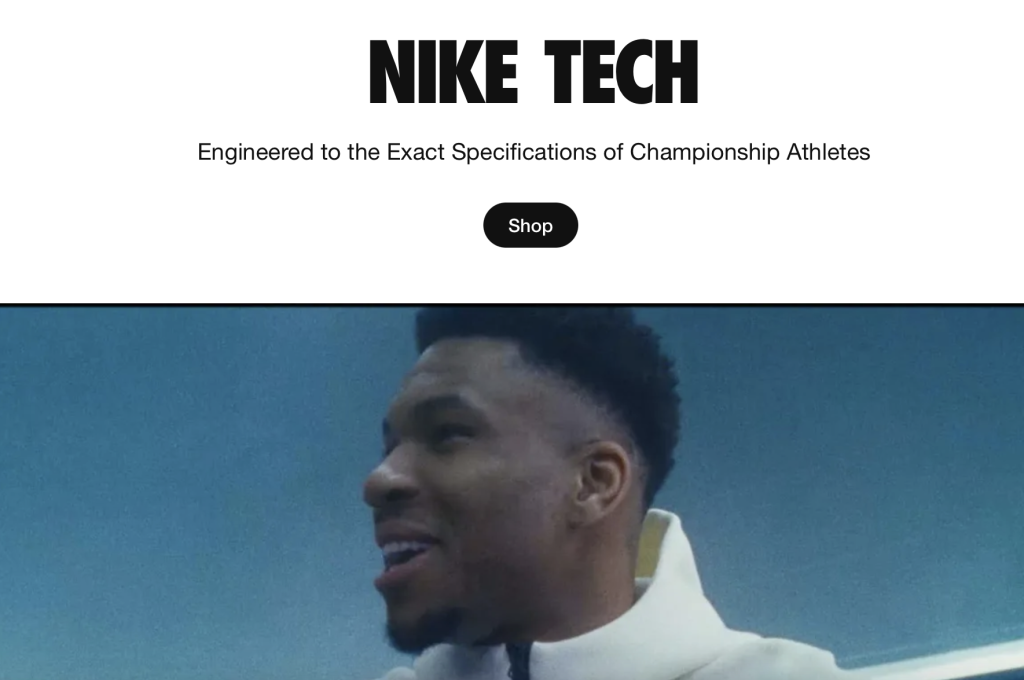
Nike, a global behemoth in sportswear, has gone beyond the role of producer of athletic gear. Through the years, it has effectively positioned itself as a brand that champions dreams, determination, and victories, both big and small. Central to this success is Nike’s unparalleled prowess in emotional storytelling through its advertisements.
A glimpse at any iconic Nike ad reveals a narrative that transcends the mere selling of sportswear. It’s a story of triumph against adversity, of pushing boundaries, and of relentless pursuit of greatness. At first glance, it’s not about the shoes or the apparel; it’s about the spirit of the athlete, the drive to achieve, and the journey of perseverance.
Each ad is meticulously crafted, blending visuals and narratives that evoke a visceral emotional response from the viewer. Whether it’s a tale of a young athlete dreaming big or a seasoned pro defying the odds, Nike’s ads resonate with a universal human experience, making them relatable and inspiring for a broad audience. It’s aspirational.
Social proof, in the form of partnerships with renowned athletes, amplifies the brand’s messaging. By associating with icons who embody the brand’s ethos, like Michael Jordan or Serena Williams, Nike strengthens its narrative of aspiration and excellence. These collaborations not only offer authenticity to their storytelling but also serve as a testament to the brand’s commitment to sporting excellence.
But what truly sets Nike apart is its ability to weave these stories in a way that aligns with current events, societal issues, and global conversations. They don’t shy away from addressing pressing topics, ensuring their brand remains relevant and engaged with its audience.
In the competitive world of sports advertising, Nike’s emotional storytelling stands proud, offering lessons in authenticity, resonance, and the power of a well-told narrative. It serves as a reminder for businesses that, at its core, advertising is about connecting with people, stirring emotions, and creating lasting impressions.
8. Tesla: Digital Marketing Product Launches
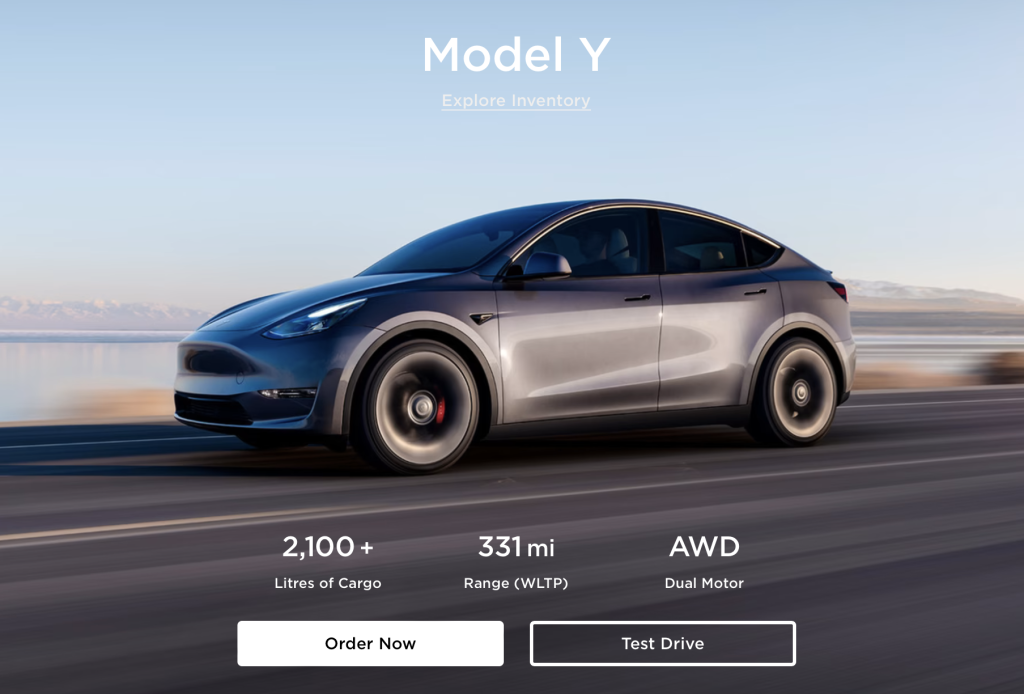
Tesla, the brainchild of Elon Musk, might be an automotive company. But it’s also a technological marvel. Every time this brand launches new products, the world stops and watches, and there’s a brilliant ad campaign strategy behind that anticipation.
A Tesla ad campaign is more than just promotion—it’s a narrative. At first glance, you’re not just looking at a car or battery; you’re witnessing a sustainable future unfold. This unique blend of innovation and aspirational messaging is what sets Tesla apart. Their different approach to marketing places them at the forefront of not just the automotive industry but also in the realm of impactful digital marketing.
Key to their successful launches is Tesla’s impeccably crafted website copy. It’s concise yet evocative, always emphasizing the groundbreaking nature of its products. Visitors to their site are greeted with compelling visuals paired with copy that paints a picture of a greener, technologically advanced future.
Moreover, Tesla often employs tactics like limited-time offers or announcing products with limited availability, creating a rush among potential buyers. Such strategies not only instill a sense of urgency but also bolster the brand’s exclusivity.
Furthermore, every detail, down to the placement of the phone number for inquiries or reservations, is meticulously planned. For businesses and marketers, Tesla’s product launches serve as an excellent example of how to generate buzz, anticipation, and, most importantly, customer engagement in the digital age.
9. De Beers: The Power of Memorable Copy
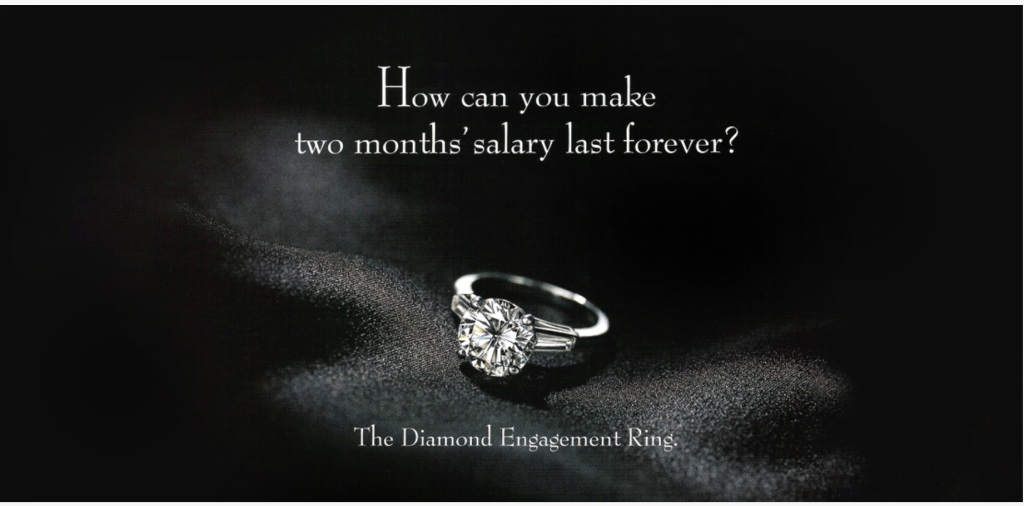
Luxury high-end brands are a fantastic source for great copywriting examples. In the glittering world of diamonds, De Beers pitches itself as a brand of luxury and timeless elegance. Their mastery in crafting memorable advertising narratives has provided marketers with some of the best ad copy examples in history.
The genius of De Beers’ marketing lies in its simplicity. With slogans like “A Diamond is Forever,” they’ve showcased the unparalleled prowess of good copywriters. This isn’t merely about selling diamonds; it’s about encapsulating a promise, an emotion, and an everlasting bond. It also demonstrates that some of the finest copywriting examples are exceptionally succinct. Less is more.
Beyond headlines, the body copy of De Beers’ print advertisements dives deep into the allure of diamonds. Each word is chosen to resonate to evoke feelings of desire, commitment, and luxury. Their campaigns are a masterclass in tapping into the emotional psyche of their target market.
This dedication to quality extends to their website copy and social media posts. Whether it’s showcasing a new collection or telling the story of their mining practices, the essence remains consistent—diamonds are not just stones; they’re symbols of enduring love and commitment.
For any business owner or marketer, De Beers offers invaluable lessons. From their iconic headlines to their nuanced body copy, they demonstrate the power of words in shaping perceptions, driving desires, and, ultimately, influencing purchase decisions.
10. McDonald’s: Time-Limited Offers
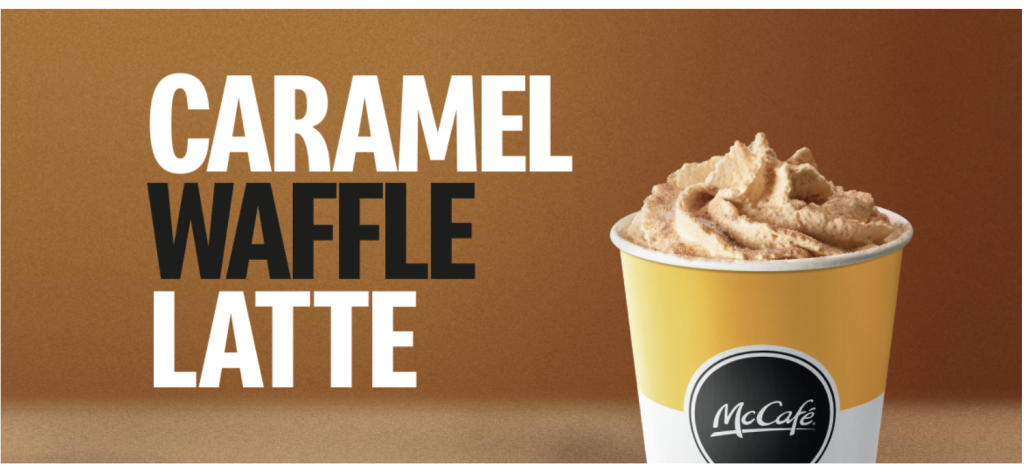
In the fast-paced world of quick-service restaurants, McDonald’s is undeniably the kingpin. With the Golden Arches recognized worldwide, their branding and marketing strategies are subjects of admiration and study. In the screenshot we’ve used for this article, you’ll notice the word McDonald’s isn’t even used, but it’s evident what the brand is.
One key element in their success in copywriting is their mastery in leveraging time-limited offers on seasonal products to create a buzz and drive footfall to their outlets.
At first glance, McDonald’s is a restaurant that sells itself as a distinct, global culinary experience. Every so often, they introduce a new product—a unique burger inspired by flavors from different parts of the world or a dessert that captures the essence of a festival. And these aren’t just random launches; they’re strategic, often tied to local celebrations, global events, or even movie releases.
This approach with a limited-time offer does a great thing: it creates anticipation. Consumers, knowing that the product is available for a limited time, are driven by a mix of curiosity and the fear of missing out. The result? Long queues, social media posts buzzing with reviews, and, most importantly, increased sales.
McDonald’s also excels in the promotion of these offers. From compelling ad campaigns on TV and radio to engaging social media posts, they ensure that their target market is well-informed and excited. The first thing many notice is the vivid visuals, be it a juicy burger or a creamy McFlurry, paired with copy that emphasizes the limited-time nature of the offer.
Moreover, they often incorporate bonus points or deals for their loyalty program members, adding another layer of incentive for customers to partake in the offer.
For business owners and digital marketing professionals, McDonald’s strategy offers a clear lesson: scarcity, when combined with quality and effective promotion, can be a powerful tool to enhance brand engagement and drive sales.
Ad Copywriting Lessons for Small Business Owners: Harnessing Universal Strategies
With words and persuasion, some key principles transcend brands and industries. For small business owners, understanding these rules could massively impact your digital marketing efforts. Delve into our key takeaways from these iconic ad copywriting examples:
Embrace Simplicity: Let Your Message Shine
Lesson: Less Can Be More.
Amid the digital clutter, a clear and concise message stands out. Instead of overwhelming potential customers with excessive details, focus on the core value or benefit of your product or service. A well-chosen image and a compelling call to action, devoid of distractions, can resonate deeply.
Storytelling: Humanize Your Brand
Lesson: People Connect with Emotions.
Narratives have an innate power to connect. Instead of merely listing product features, weave a story that resonates with the emotions and aspirations of your audience. Personal stories, customer testimonials, or scenarios where your product makes a difference can all help humanize your brand.
Master the Art of Timing: Create Urgency
Lesson: Limited Offers Drive Action.
Introducing time-bound offers or promotions can spur potential customers into action. By emphasizing the fleeting nature of a deal or the limited stock of a product, you can induce a sense of urgency that propels conversions.
Adaptability: Stay Relevant in Changing Times
Lesson: Be Ready to Pivot.
The digital landscape is in constant flux. What’s trendy today might be passé tomorrow. It’s crucial to monitor your ad’s performance and be willing to tweak your strategy based on feedback and changing circumstances.
Trust and Social Proof: Let Others Vouch for You
Lesson: Credibility is Currency.
Incorporate reviews, testimonials, or industry recognitions in your ad copy. When potential customers see that others have had positive experiences with your brand, they are more likely to trust and choose you.
Call-to-Action (CTA): Direct and Compel
Lesson: Guide the Next Step.
Every piece of advertising should have a clear goal. Whether it’s signing up for a newsletter, making a purchase, or simply learning more, your CTA should guide the user explicitly. Be clear and persuasive in your directive.
Continuous Learning: Always Be Testing
Lesson: Data Guides Strategy.
The beauty of digital marketing is the wealth of data at your fingertips. Regularly test different versions of your ads to see what works best. Adjust your strategy based on these insights to optimize results.
Visual Cohesiveness: Make It Memorable
Lesson: Consistency Amplifies Brand Recall.
Ensure that your visuals, whether they’re images, graphics, or videos, align with your brand’s identity. Consistent use of colors, fonts, and styles across platforms ensures that your audience can easily recognize and recall your brand.
Address Pain Points: Solve, Don’t Just Sell
Lesson: Offer Solutions.
Your audience is looking for solutions to specific problems. Tailor your ad copy to address these pain points directly and highlight how your product or service offers the ideal solution.
Stay Authentic: Authenticity Breeds Loyalty
Lesson: Be Genuine.
In a world rife with marketing messages, authenticity stands out. Ensure that your brand voice remains genuine and true to your values. Customers are more likely to remain loyal to brands they perceive as authentic and trustworthy.
Value Proposition: Clearly Define What Sets You Apart
Lesson: Stand Out in a Crowded Marketplace.
Every business, no matter how small, has something unique to offer. It’s essential to identify and articulate this in your ad copy. Whether it’s unmatched customer service, a one-of-a-kind product feature, or a community-driven mission, make sure potential customers understand why they should choose you over competitors.
Engage, Don’t Intrude: Cultivate Respectful Marketing
Lesson: Build Relationships, Not Just Customer Lists.
Digital marketing offers numerous channels to reach potential customers, but it’s crucial to use them respectfully. Whether you’re email marketing, using targeted ads, or engaging on social media, ensure your content adds value and isn’t perceived as intrusive or spammy. Respectful engagement builds trust and long-term relationships.
Adapt to Platforms: Tailor Your Message
Lesson: One Size Doesn’t Fit All.
Different digital platforms cater to various demographics and have distinct user behaviors. A message that works on Facebook might not resonate on LinkedIn. It’s crucial to understand each platform’s nuances and adapt your ad copy accordingly. Tailoring your message increases the likelihood of engagement and conversion.
For small business owners, these universal ad copywriting principles can be the keys to crafting messages that not only capture attention but also drive action. As you embark on your digital marketing journey, let these lessons guide your strategy, allowing your brand’s unique voice to resonate in the vast digital expanse.
Ad Copywriting Examples from the Ages: Mastering the Timeless Marketing Art
Navigating through these ad copywriting examples underscores the transformative power of expertly crafted messages. These brands have set benchmarks, proving that with the right words, one can inspire, persuade, and leave a lasting impression. As you endeavor to craft your brand’s narrative, remember the potency of exceptional copywriting. Need assistance sculpting your message? Explore our sales funnel copywriting services to elevate your brand’s voice and turn prospects into loyal customers.
Next Steps: Master Your Sales Funnel
Impressive copywriting will get people to take notice. But what will you do with your audience after that? The answer is to move them into your sales funnel. To help you achieve that goal, we’ve put together a mini-eBook that will take you through the steps of setting up and launching your funnel. To grab a copy of our eBook for free, follow the instructions on the form below.
Need to Save This Article? Pin This Post
Want to bookmark this article? Pin the image below to save it for later reading.
